How to Play
There are four types of buttons you can click.- Time at the TOP | Move onto the next scene when it’s unlocked.
- Puzzle in the MIDDLE | Rearrange the boxes into your own SYMMETRICAL SYMBOLS.
- Guide on the LEFT and RIGHT | Rearrange the words according to your play and trust.
- RIGHT-CLICK anywhere to enter cinema mode | You can view the whole scene without any UI buttons. LEFT-CLICK anywhere on the screen to enable the buttons.
During the game, press F12 to take a screenshot and esc to exit.
Running Time
Between 3 to 21 minutes. The game can also be played forever as it is fundamentally an endless alarm clock or symbol maker.Recommended Aspect Ratio
16:9 5K, 4K, FHD / 16:10 WQXGA / 32:9 DUHD, DQHD{“The Mind of a Destructive Mother”, “The Quantum Wave Field of a Productive Daughter”, “The Physical Constitution of the Daughter’s Potential Girlfriend” };
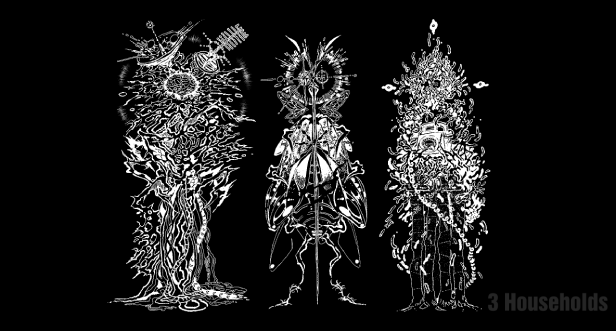
Credits
Game Design/Development | Cha Yeonså 차연서Sound/Voice | Lee Sanghwa 이상화
Graphic Design | In Hyunjin 인현진
Illustration | jelriggeom 젤리껌
Photography | Yooahn 유안
Review 1 | Kwak Sojin 곽소진
Review 2 | Cho Hyeyoung 조혜영
Translation/Proofreading 1 | Park Jaeyong 박재용
Translation/Proofreading 2 | Dayun Ryu 류다연
Energy Support 1 | Halo Kim 김헤일로
Energy Support 2 | Nari Sohn 손나리
References
《Concerning My Daughter》(Kim Hye-Jin, translated by Jamie Chang, Restless Books, Kindle Edition, 2022)〈The Non-Being of the Owl〉 (Bae Suah, Translated by Deborah Smith, 《North Station》, Open Letter, Kindle Edition, 2010)
《Last Words from Montmartre》(Qiu Miaojin, translated by Ari Larissa Heinrich, NYRB Classics, Kindle Edition, 2014)
《The Undying: Pain, Vulnerability, Mortality, Medicine, Art, Time, Dreams, Data, Exhaustion, Cancer, and Care》(Anne Boyer, Picador Paper, 2020)
《Staying with Trouble: Making Kin in the Chthulucene》(Donna Haraway, Duke University Press Books, 2016)
《In the Darkroom》(Susan Faludi, Metropolitan Books, 2016)
《The Body Keeps The Score》(Bessel van der Kolk M.D., Penguin Publishing Group, 2015)
《The S&M Feminist》(Clarisse Thorn, CreateSpace Independent Publishing Platform, 2012)
《Reborn ― Journal & Notebooks 1947~1963》(Susan Sontag, Edited by David Rieff, Farrar, Straus and Giroux, 2009)
《EMDR in the Treatment of Adults Abused as Children》(Laurel Parnell PhD, W. W. Norton & Company, 1999)
《The Blindfold》(Siri Hustvedt, Kindle Edition, 2012 / first published 1992)
〈Lady Lazarus〉(Sylvia Plath, Edited by Ted Hughes, 《Collected Poems》, Kindle Edition, Faber and Faber, 2015)
《The Tibetan Book of the Dead》(Padmasambhava, Penguin Classics, Kindle Edition, 2008)
《수용소와 음악(Music in Concentration Camps)》(이경분, 성균관대학교출판부, 2021. KR)
〈마더-컴퓨터-레즈비언(Mother-Computer-Lesbian)〉(조혜영 외 13인, 《Fantasy without Origin 원본 없는 판타지》, 후마니타스, 2020. KR)
《새벽 세 시의 몸들에게(To the Bodies at 3am)》(전희경 외 3인, 봄날의책, 2020. KR)
《딸에 대하여(About My Daughter)》(김혜진, 민음사, 2017. KR)
《양자의학(Quantum Medicine)》(강길전, 돋을새김, 2013. KR)
《쇠를 먹는 불가사리(Bulgasari Eating Iron)》(정하섭, 길벗어린이, 1999. KR)
〈Die Farbe der Wahrheit: Dokumentarismen im Kunstfeld〉(Hito Steyerl, 2007. DE)
《진실의 색: 미술 분야의 다큐멘터리즘(The Uncertainty Principle of Modern Documentarism)》(Hito Steyerl, Workroom, 2019)
Reviews
Within the transmogrifying fractal network, we are greeted by someone. That someone, appearing as text on the left side of the screen, is ‘the destructive mother,’ ‘the productive daughter,’ ‘the daughter’s potential girlfriend,’ or the body as a ‘dummy’ that is specific enough to be imagined in our minds. The being repeatedly appears, each time with a different occupation and personality, and we can only be certain of the fact that these infinite bodies are in a pathological state of mind. They reveal they have arrived here as a result of experiencing symptoms such as “distraction,” “stress,” “fatigue,” “insomnia,” “indigestion,” “discomfort,” “pain,” “anxiety,” and “anger,” and that they felt safe in a very localized area of this household. There is also an alphabet chart in the center. The chart is composed of 21 vowel boxes1). The incomplete characters await to be activated by the mouse cursor – vowels cannot narrow nor close our vocal chords – here, we are tasked with moving the vowel boxes up, down, and side-to-side to create some kind of pattern. Once a pattern is established, a poem about ‘that household’ is randomly generated on both sides of the screen. Redacting information on why that event had to occur at that place in that manner, the poems manifest as gluttony and nausea, and screams and tremors that have spawned from the mailbox, the bed, the trash can, and the floor.What are the connections between the rotating, unopened boxes, and how will they relate to each other? How much longer do we have to spend opening these boxes while suspended in this re-writing with no beginning or ending? Instead of making empty promises of a better next time, the game makes us learn the rhythm and cadence of poetry. We have but poetry when faced with the cruelty of unpredictable and unrecognizable events, as well as the times that cannot become a pattern. And what poetry can do is impart the most humane rhythm and cadence to the calling of pain. So rattle – make noise – and repeat. Until it can be recognized as a rhythm. Until our pain becomes a rhythm. Just like how we have been singing for a long time.
1)The vowel graphics that use the Korean phonetic characters are the same in the English version of the game.
Kwak SoJin (Visual artist)
The common aesthetic between games and queerness is endless ‘failure.’ The experience of games, where problem solving and goal achievement are the main driving forces, is strung together by countless failures and the pain of enduring those failures. What about growth? A new game entails a new set of rules and context, commanding a re-learning to take place every time. ‘Failure’ is essentially inherent in games, and linear and continuous growth is impossible. Failing in ‘normality’ and living a life without a model, queerness simultaneously demolishes and constructs over and over again. 3 Households is a ‘queer architecture game’ that shows the aesthetics of this double failure. Actants such as “the Mind of a Destructive Mother,” “the Quantum Wave Field of a Productive Daughter,” and “the Physical Constitution of the Daughter’s Potential Girlfriend” build and protect the house. For them, tending to the house is an act of tearing down what used to be a heteropatriarchal home. It constantly undermines society's demand to “know one’s place” as well as the notion of a sweet home as a warm, safe and secure place. There is no place more traumatic than a home. In the unstable, queer house built in this game, children also give birth to parents.
In the game, the player constructs a house by arranging 21 cubes, each with a Korean vowel. Guided by the meditative music of electronic sounds, vowels formed according to the shape of the periodic table travel through space, continuously shifting the composition of the bricks, the location of the rooms, the shape of the house, and the matrix in which the house resides. The movement of the vowel cubes constantly replaces nouns and adjectives with the adjective string indicating the state of mind, occupation and role string, physical condition string, room role string, furniture and equipment string, housework string, and etc., giving birth to queer homes, parents, children, and lovers. The three women form a family. Like a game of musical chairs (except here, the number of chairs remain the same) or Tetris, the position and role of the women endlessly rotate; they transform and stack their bodies, adjusting to one another’s presence. Someone manages the house while someone else despairs and another turns off the lights. Like Bulgasari, an iron-eating creature in Korean mythology, they consume each other's pain and despair, and a sense of loss and mourning ensue. How will the mother, the daughter, and the daughter's girlfriend relate to one another, and what will they inherit from each other? 21 Vowels, 21 boxes, 21 keepsakes, 21 coffins, and 21 shelters… The people who are homebound encourage the players to hide and seek in order to discover a safe space, and to make and break that space into a place so as to embark on a one-way trip to meditation and healing. Sharing 3 Households, which is part of Cha’s artistic practice, on Steam, a video game distribution platform, will also play a part in that journey.
Cho HyeYoung (Media and cultural studies scholar)
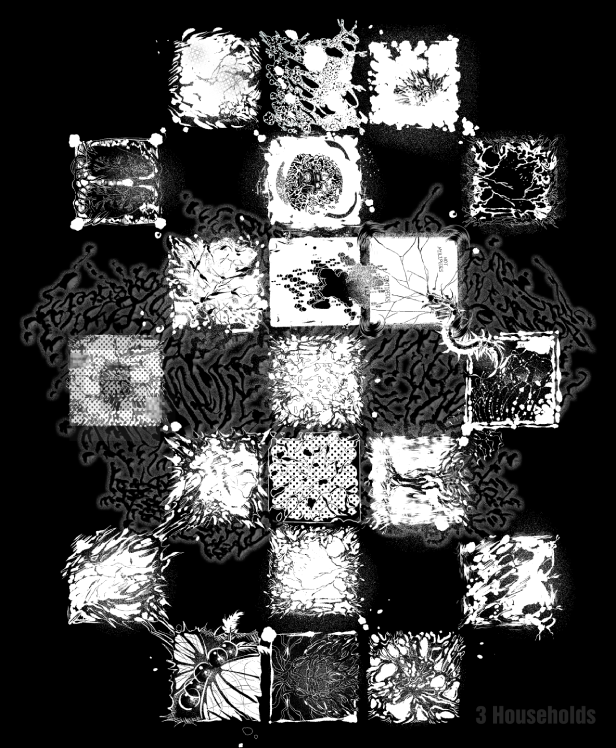
REQUIRES INTERNET CONNECTION AND FREE STEAM ACCOUNT TO ACTIVATE. Notice: Product offered subject to your acceptance of the Steam Subscriber Agreement ("SSA"). You must activate this product via the Internet by registering for a Steam account and accepting the SSA. Please see view the SSA prior to purchase. If you do not agree with the provisions of the SSA, you should return this game unopened to your retailer in accordance with their return policy.
Minimum:
- Requires a 64-bit processor and operating system
- OS *: Windows 7/8/10/11
- Memory: 4 GB RAM
- Storage: 400 MB available space
Recommended:
- Requires a 64-bit processor and operating system
- OS: Windows 10/11
- Memory: 8 GB RAM
- Storage: 400 MB available space
【Windows】: 〇【Mac】: 〇【Linux】: ×

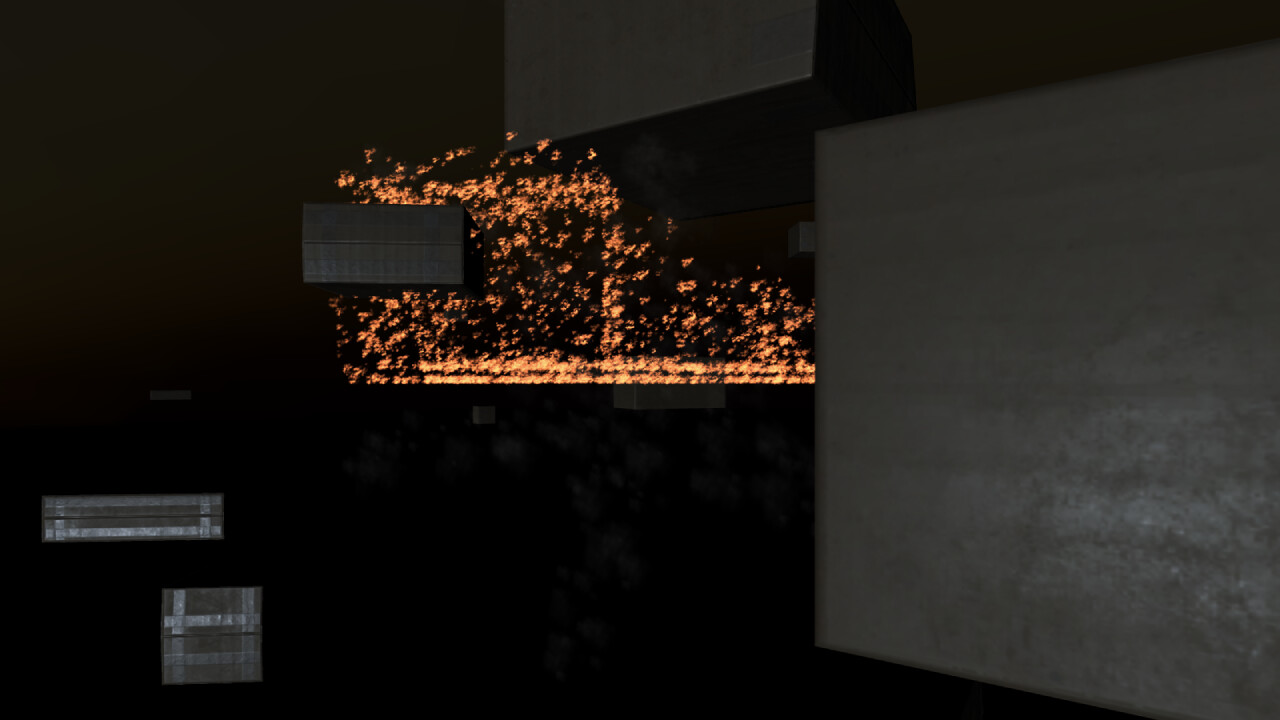
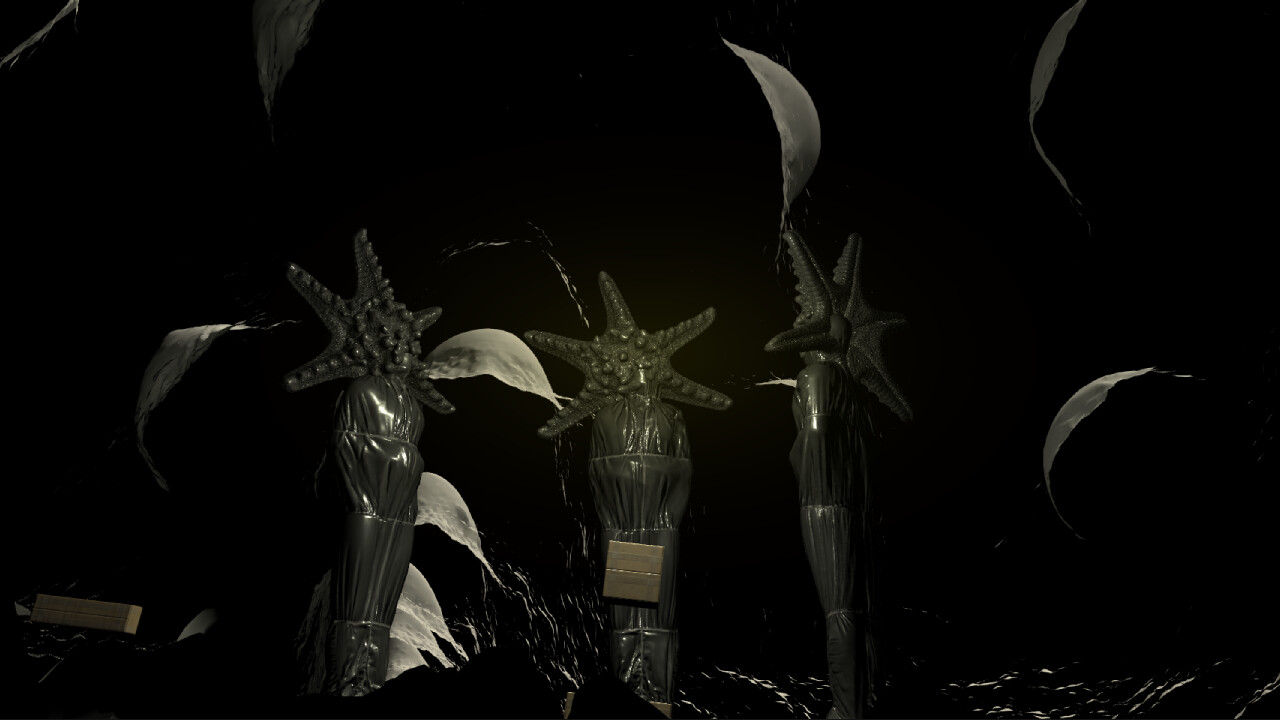

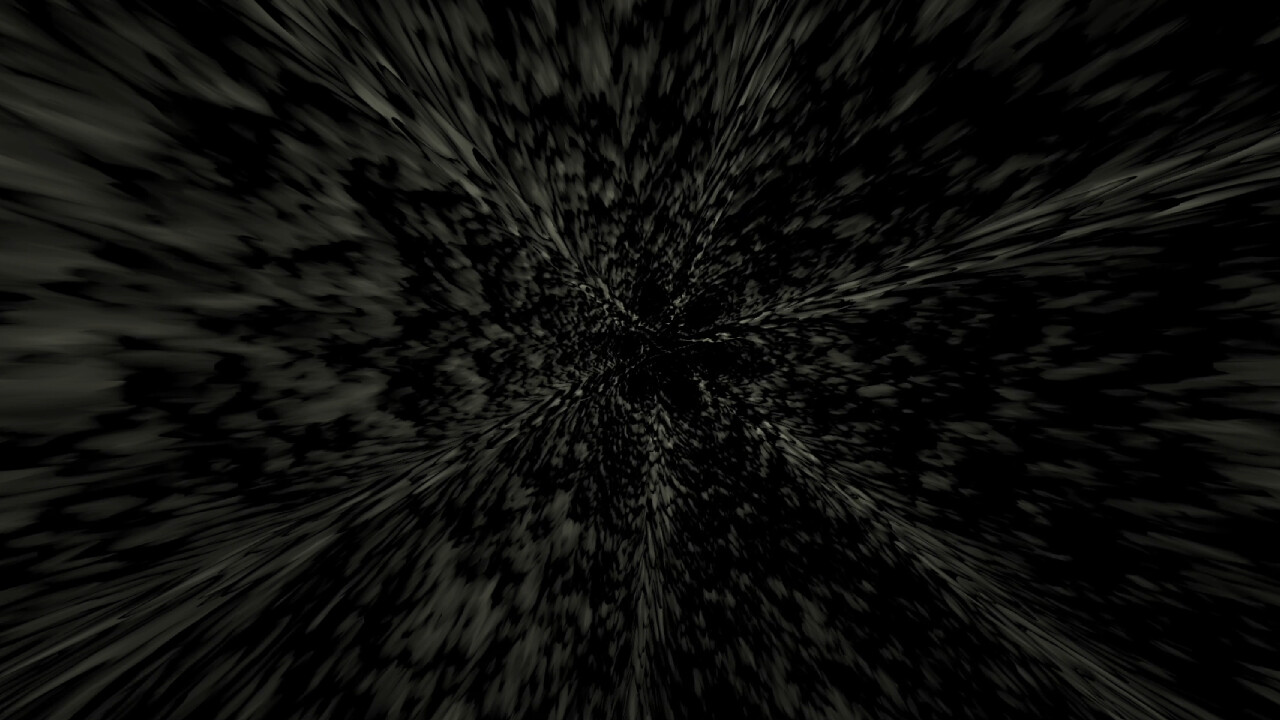

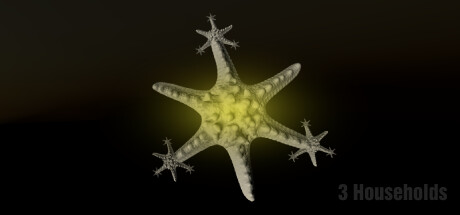

 Frequently Asked Questions
Frequently Asked Questions
 Recommended Character
Recommended Character
 Sword
Sword